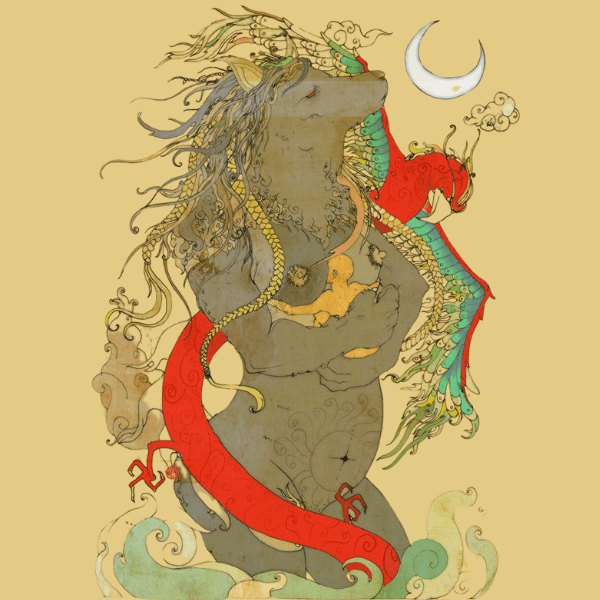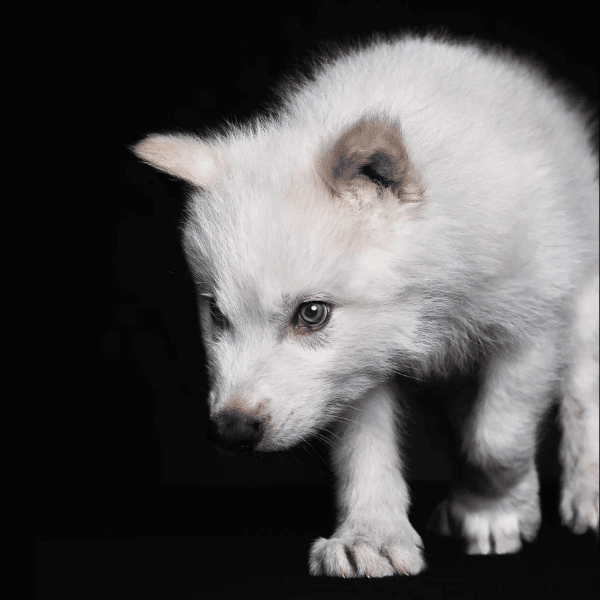In a secretive wildlife preserve shrouded by morning mist, a chorus of howls signals an astonishing turn in natural history. The howls belong to three pups with thick white fur – creatures that, by all rights, shouldn’t exist in the modern world. They are dire wolves, or at least the closest thing to that Ice Age legend that science has ever produced. Over 13,000 years after dire wolves vanished along with the woolly mammoths and sabertooths, biotechnology has pulled off what once seemed like magic: the birth of these pups, engineered from ancient DNA retrieved from dire wolf fossils.
What Really Happened in the Lab?

These not-quite-ghostly white wolf pups – two males and one female – have been named Romulus, Remus, and Khaleesi, an eclectic mix of ancient and pop culture nods. At just a few months old, they are already outsized, weighing around 80 pounds, on track to reach roughly 140 pounds at maturity – a massive stature reminiscent of their Pleistocene forebears. Their stark pale coats and muscular builds hint at the Ice Age genetics spliced into their cells, even if their precise species identity sparks debate. Dallas-based Colossal Biosciences, the startup behind this project, is boldly calling them the world’s first “de-extincted” animals. Skeptics, however, note that these howling youngsters are essentially genetically modified gray wolves with a dash of dire wolf DNA, rather than true resurrected dire wolves.
Not Clones Just Wolves

For all Colossal’s talk of de-extinction, independent scientists point out that the pups are not clones of any dire wolf that trod the Pleistocene tundra, but rather gray wolves with a few genetic tweaks. After all, dire wolves and gray wolves share roughly 99.5% of their DNA code. By editing key genes – twenty in total – the team endowed a gray wolf embryo with dire wolf traits like larger size, thicker fur, and a more robust build. In practice, this meant using CRISPR gene-editing on cultured gray wolf cells, splicing in ancient dire wolf gene sequences identified from fossil DNA, then cloning embryos and implanting them into surrogate mother dogs. Sixty-two days later (the normal canine gestation period), healthy pups were born. The result may look, run, and howl like a dire wolf, but as one biologist put it, “All you can do now is make something look superficially like something else” – not truly bring back an extinct species.
A Howl from the Past

Dire wolves (Aenocyon dirus), of course, were formidable predators in their own right long before entering any laboratory. They roamed widely across the Americas during the last Ice Age, perhaps the most successful predators of their day alongside saber-toothed cats and giant short-faced bears. A typical dire wolf was about a quarter larger than a gray wolf, with a broader skull and bone-crushing jaws built to bring down Ice Age megafauna. Their remains – including thousands of bones entombed in the La Brea Tar Pits of California – paint a picture of a carnivore specialized in hunting large prey like horses and bison. Genetic research in recent years suggests dire wolves followed a lonely evolutionary path, diverging from other canid lineages millions of years ago. They left no living descendants. Unlike the fictional Stark family direwolves in Game of Thrones, real dire wolves weren’t magical creatures – but they’ve always held a powerful sway on the human imagination.
Romulus, Remus… and Khaleesi?

In Roman lore, the city of Rome itself sprang from the milk of a wolf. The abandoned twins Romulus and Remus survived only by suckling a she-wolf in the wild; that wolf, ferocious yet maternal, later became enshrined in bronze and legend as the lupa Capitolina, the emblem of Rome’s origins.
Romulus and Remus were the twin sons of the god Mars and the vestal priestess Rhea Silvia. Cast into the river Tiber to die, they were saved and nursed by a she-wolf, a creature sacred and symbolic in Roman mythology. Romulus would later go on to found the city of Rome after a fatal disagreement with his brother. The myth doesn’t just explain a city’s birth – it marks the wolf as midwife to an entire civilization.

The Real She Wolf
Far to the east, Turkic legends tell of a young boy named Asena who, after his people were massacred, was rescued and nursed by a sacred she-wolf. When the boy grew, the she-wolf bore him ten sons, who became the progenitors of all Turkic tribes. Asena, whose name lives on in many cultural symbols, represents endurance, guidance, and tribal unity. She is one of the few female wolves in global creation myths – not just a symbol, but an origin.
In both the ancient Roman and Turkic worlds, the wolf was more than an animal – it was an ancestor, a protector, a divine agent.

So when the new wolf pups were named Romulus, Remus, and… Khaleesi… it was hard not to smile a little. Asena, arguably the most mythically rich female wolf in origin stories, was passed over for a dragon queen from a TV show. Not that mythology is short on wolves – they’re everywhere, howling through the forests of Norse, Celtic, Slavic, and countless other traditions. But Asena shares something specific with Romulus and Remus: she, too, belongs to a creation myth. A foundational wolf. And that makes her absence in this naming trio feel like a missed opportunity. Khaleesi, for all her pop power, carries a scent far too close to branding.
A Spell by Another Name
Still, there’s something undeniably magical about all this. Gene editing ancient wolf DNA into a living creature? That’s not just science. That’s a resurrection ritual done under sterile light. It’s modern necromancy in a lab coat. We may not be summoning spirits with candles and chants, but we’re resurrecting ghosts with pipettes and algorithms. A spell by another name.

And what might this spell lead to? Colossal isn’t stopping with wolves. They’re already deep into projects to recreate the woolly mammoth, with the goal of producing a mammoth-elephant hybrid calf by 2028. The dodo is on their list too. Their ultimate aim? Rewilding the planet with lost species and repairing broken ecosystems. Whether that’s bold ecological innovation or Jurassic Park on slow release, time will tell.
Between Science and Sorcery
Of course, no one is bringing back dinosaurs just yet. DNA doesn’t last that long. But creatures like the dire wolf – who only recently left the stage – offer enough fossilized material for genetic sleuths to work with. Still, ethical questions loom large. Even if we can bring back Ice Age animals, should we? Do they have a place in today’s ecosystems, or are we simply satisfying a ghostly nostalgia?

Some indigenous voices have called the birth of these pups a return of ancient spirits. A reawakening. The dire wolf is back, yes – but so is the conversation about what it means to wield the power of creation.
In the end, three pups were born. They run through snow like their ancestors, but they are creatures of this world, sculpted by the past and the present alike. Their howls echo through the trees – and maybe, just maybe, through time itself.
And somewhere in those echoes, myth and memory move closer again. Science and storytelling meet under the full moon, and something ancient stirs.
References:
- Reuters: US company resurrects the extinct dire wolf, or some version of it
- The Guardian: The de-extinction of the dire wolf – is Jurassic Park really happening?
- Business Insider: Dire wolf brought back from extinction by Colossal Biosciences
- Live Science: Colossal creates ‘de-extincted’ dire wolves using gene editing
- Smithsonian Magazine: Dire wolves weren’t wolves at all, DNA shows
- Britannica: Romulus and Remus | Roman mythology
- World History Encyclopedia: Asena in Turkic Mythology
- National Geographic: How scientists are bringing back extinct species
